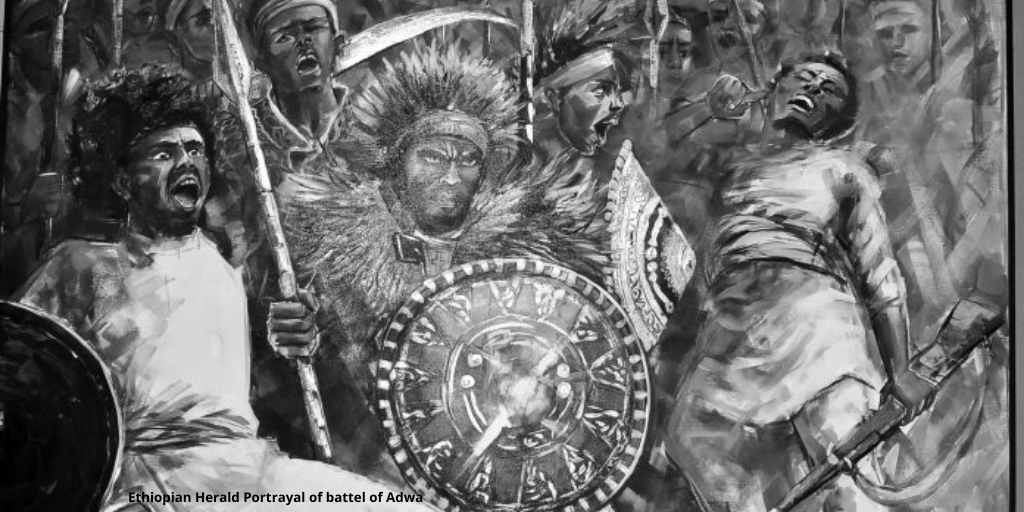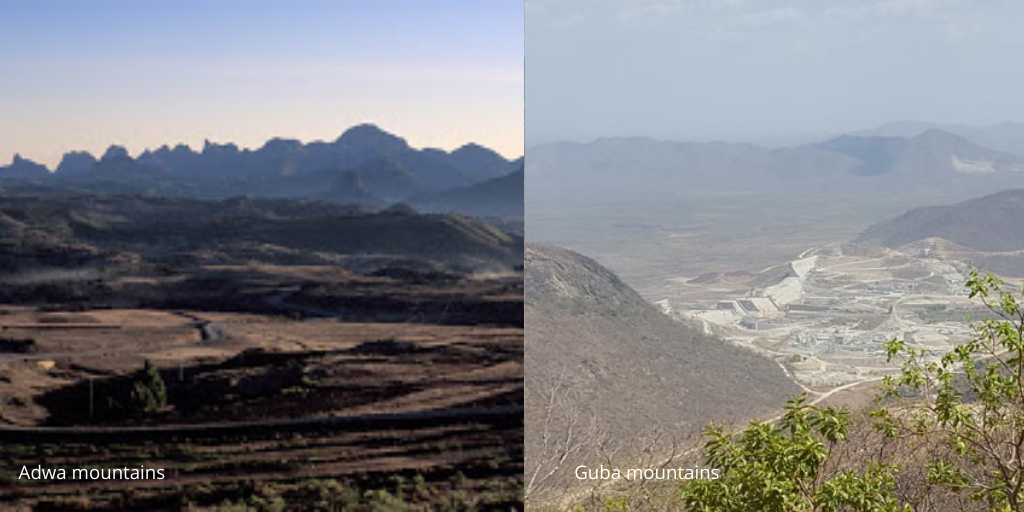Opinion: How Ethiopia’s history of resistance shaped the ongoing battle for the Nile

Yeshiwas Degu Belay, For Addis Standard
Addis Abeba, March 02/2020 – In one of the most popular and timeless Ethiopian songs, “Adwa”, Artist Ejigayehu Shebabaw (Gigi) resonates the 19th Century heroic citizenship and the symbolic, cultural and political importance, not only to Ethiopians but also to the black people as a whole, of Africa’s great victory, Adwa.
On 2nd March 1896, Ethiopians had collectively defeated the heavily mechanized Italian colonial army at the battle of Adwa, in northern Ethiopia. The victory safeguarded the independence of the state in the midst of European “scramble for Africa” and constituted ideologically important force for the successive Pan-African struggles in the continent and abroad.
This historical milestone is documented in the annals of black history and embodied in Ethiopia’s popular culture and identity though the national memories and historical interpretations are divided. Today, Ethiopia celebrates the 124th anniversary of the victory.
In a month after the Adwa commemoration, the GERD (Grand Ethiopian Renaissance Dam) will take the celebratory public stage for its 9th year anniversary. This doesn’t seem a coincidence. Located at a place called Guba, western Ethiopia, the dam was officially launched on 2nd April 2011 on the Blue Nile river to generate 6, 500 MW electricity. Since then, there has been a trend on both stages that the leadership often speak about both events. The national media and public conversation too.
Here, it is imperative, in academic or policy wise, to look at in what ways the cultural-historical experiences have influenced the struggles to uplift the country, and hence their relevance to the contemporaries. This piece particularly reflects how the battle of Adwa, despite other war stories of the state, so relevant to the understandings of today’s development on the Nile River?
Adwa’s effect on Ethiopian Renaissance dam
It is not exaggeration to say that no other development project has been incredibly linked to Ethiopia’s past than the GERD, which is the centerpiece of Ethiopia’s development. The Adwa Victory is an exemplary event that could be conveyed by the public proverb which is often used to express unity and courage: “ድር ቢያብር አንበሳ ያስር” which literally means collaboration of spider webs can tie the lion. Though divided along multiple political lines, Ethiopians were united- and still united when it comes to the core of national interest- and battered the colossal Italian mechanized army that aimed at controlling the sovereign and its interests. Culturally so powerful that after more than a century the unified stand against colonialism remains in the minds of today’s decision makers, the national media, and the general public. Such historical consciousness is not only to reflect on the current affairs retrospectively, but also to realize contemporary development endeavors.
Speaking at the 123rd year anniversary of Adwa last year, President Sahle-Work Zewde said, “Adwa victory shows, despite our internal problems, there is no challenge that can’t be overcome if we have unity. The Adwa victory should be repeated in our anti-poverty struggle to create a prosperous Ethiopia.” The GERD, more than any other development infrastructures, reflects a new wave of such needed collective effort that promised to restructure Ethiopia’s future.
Back in 2014, an article published in a local newspapers reads: “Seeing through the construction of the Renaissance Dam is not an agenda of politicians, the ruling Ethiopian Peoples’ Revolutionary Democratic Front (EPRDF) or the government alone. Neither is it something which the people of Ethiopia are coerced into supporting. It is a feat which politician, the public and the government alike are willing and determined to achieve through a collective effort”.
GERD is a national pride and a collective struggle of today’s patriotic citizenship. Both state-run and private-owned national media, what Cohen (1994:2) referred as “frontier guards” of national identity, convey the dam as “a collective feat”, “a national agenda” and “monument being erected by all Ethiopians” despite the internal political differences, according to the preliminary finding of team of researchers at IHE Delft working on media, science and water diplomacy.
Africa at the center of both Adwa and the GERD
What most commentators say Africa’s huge victory over European army by the “last man standing” in the time of empire, Adwa has moved beyond the national boundaries. It has become “emblematic of African value and resistance, the bastion of prestige and hope to thousands of Africans…” speaks Professor Molefi Asante, the renowned African- American historian. The victory is cemented in the identity of African states and waved by many national flags containing the green, yellow and red of the historic Ethiopian flag, despite contested internally. The making of Ethiopia as the capital of Africa by placing of the African Union headquarters is, therefore, not by coincidence at all; it is historically constituted.
What is more evident is that Adwa has inspired Ethiopia to embrace its impact on the broader continental scale. This is, for example, shown in its endeavors of making its airlines “the new spirit of Africa”. The GERD is another example; it is widely described as “a pan-African venture”, “Africa’s icon with the spirit of ‘YES We Can’”, and “an emblem of regional progress and prosperity”.
Adwa’s connectivity effect of spatially distant communities, in their struggle against foreign invasion, is also echoed at the dam’s mission to connect geographically distant energy supply and demand communities, and nurtures other infrastructure connections to effect of economic partnership between states, and renew Africa’s identity, therefore to connect and construct the continent through the state.
Internally led operations to challenge western narratives
Both Adwa and Guba present a plethora of challenges to navigate and strategize for development and military purposes. In particular, dealing with the very harsh weather and tangling with the mighty river, the Nile, that flows in a very deep gorge is inconceivable challenging. Brave and skilled minds, local knowledge, information and internal resource is imperative, a lesson learned from Adwa.

The construction of the GERD, first initiated and subsequently inaugurated by the late Prime Minister Meles Zenawi, is led by Ethiopian nationals who are “technopolitical fixers”, the “architects of the dam” deploying their knowledge and capability. Public intervention in the form of bonds, employee contribution, diaspora and private donations is intertwined into the country’s larger aspirational project of the US$5 billion. Domestic financing has saved the country’a sovereignty, which could otherwise make the state fall under the conditionalities of donors and foreign powers. In this regard, the dam is eloquent heroism of “rewriting Adwa in Guba”.
This operation, like the historical victory that placed Ethiopia on the global stage, appears to challenge the western narrative of Ethiopia and Africa as a whole. Stated in one of editorial reviews of the book “The Battle of Adwa” by Raymond Jonas (2011) “the events at Adwa cast doubt upon Europeans’ unshakeable certainty that Africans would eventually fall under their rule.” Likewise, the GERD demonstrates the changing face of Ethiopia and slams the stereotypes that have been sported across the global media and academics reciting Ethiopia as a poor country that lack the capacity to execute mega projects. Broadly speaking, it puts in question the general assumption that the making of large-scale dam infrastructures, especially in the developing countries, requires “states- donor relations”.
Hydro-politics is rousing public memorization of Adwa
A very close observation shows the GERD is not simply a passive object shaped by cultural- historical trajectories. Rather, it is an active space where people think and memorize Ethiopia’s history; hence, it created “historical consciousness”.
Following the Washington sponsored trilateral talks between Ethiopia, Egypt, and Sudan, with the United States and the World Bank first as observers and later on as mediators; and the release of the Joint Statement on 15 January 2020, what would rather be called as “a Washington Statement”, Ethiopians have collectively reacted invoking the state’s sovereignty that their ancestors had sacrificed themselves for. Professor Senait Fisseha’s tweet, for example, is one among many that captured this nationwide consciousness of belonging to “a sovereign nation” that “has never been colonized”. Another tweet likened the statement with Wuchalle agreement.
Ongoing discussions on the Nile have led the public to think about and memorize the very reason behind Adwa, the scarifies of the people of Ethiopia, the achievement and the unfinished struggle to protect the sovereignty of the state. In effect, such historically conscious public conversations partly made the leadership in Ethiopia not take part in last week’s talks, and to reject the deal that Washington has orchestrated.
Adwa is the past, the present and the future
Adwa remains relevant to understandings of how cultural-historical experiences of collective front against foreign interference and injustice has shaped the current Ethiopia’s mega dam development on the Nile River. It inspired the public to co-construct the dam collectively and the leadership to make the most of necessary resource through financial, moral and ideological support from within.
What the outside world, especially the West, gets so wrong about the dam is its narrow branding of it as a hydraulic infrastructure. In fact, it is a hydroelectric project, but it surpasses economics of production. For Ethiopians, it is entangled with their culture and history and sculpted into the identity of the contemporaries whose imaginary of citizenship, ownership and history making, not only during war periods but at the peak of internal division, like today, is benchmarked by Adwa.
While such cultural and historical experiences are persistently shaping Ethiopia’s current developments on the Nile, so do the politics of the Nile arouses “historical consciousness”; the very reason of Ethiopia’s struggle against foreign invasion, and in favor of sovereignty, security and territorial integrity, are brought to the front to reinforce the position of the state on the utilization of the river.
Adwa is the past, the present and the future. It is an important historical event and a compelling reason for struggles to meet present-day needs. It is also an ongoing heroic process that informs and defines Ethiopians’ process of imagining a better future. AS





